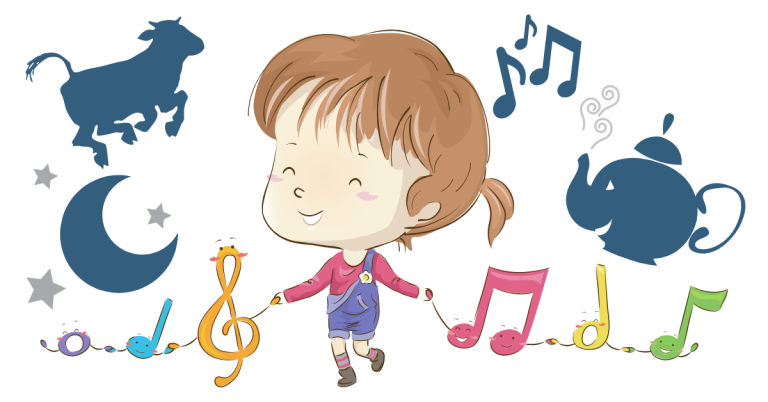Syllable Counting & Sorting Activities For Little Acorns
Looking for some hands-on activities to help your little acorn learn to recognize syllable patterns? These syllable counting and sorting games have got you covered!

Syllable activities can be a big hit with children. By playing syllable games, children learn important language sound patterns, how to identify the number of syllables in words (a form of segmenting), and how to blend them together again.
Playing with words and breaking words into syllables is fantastic for building your child’s phonological awareness. The best part? Syllable activities are loads of fun for kids. No dangling of the carrot is needed to get kiddos to participate! Beknownst to them, while they’re having a hoot learning syllable pattern recognition, they’re building important skills for future reading, writing, and oral language development.
You can encourage this development even further when you create a space that invites them to explore, play, and have fun with language wherever they are.
With that said, here are some excellent activities that will keep your little learners’ attention and a few that will also get them moving!
1. Counting Syllable Strips
A Fine-Motor Skill Activity

Using clothespins or a counter (manipulative), children can mark the correct number of syllables.
Syllable counting strips make an interactive and rewarding activity for children in a kindergarten class. Not only will they be learning important sound awareness and listening skills (syllable division skills is a phonological awareness skill), but they will also be developing their fine motor skills too!
Working with clothespins is an excellent way to help children strengthen their pincer grasp and finger muscles. This pincer grasp is important for children to master because it helps with many life skills, such as buttoning up buttons and proper pencil grip for future writing.
This activity can also be done using little bingo chips or another type of manipulative to cover the number indicating the correct number of syllables. I recommend laminating these counting strips so they can be used over and over again. Once they’re laminated, you can also have children use whiteboard dry-erase markers to mark the number with the correct amount of syllables for the noun in the pictures.
2. Syllable Sorting

Does the word caterpillar have 1, 2, 3, or 4 syllables? That’s right, 4 syllables.
Children get to sort words by how many syllables they have, putting them into their respective groups.
You can have children sort words by their syllables using different methods:
- They can make columns under the numbers 1, 2, 3, or 4.
- They can put pictures into separate baskets or bins corresponding to the number of syllables
- You can make magnetized pictures and have children sort them onto different cookie trays or magnetized whiteboards
Extension Activity Idea: Have your child pick one of the piles or containers. Get them to pick three to five pictures from that syllable group and write a couple of sentences using the words.
Example: If your child picks the container with the words that have three syllables and the three picture cards they pick are elephant, umbrella, and kangaroo, then they could write a sentence about each of these.
Make Reusable Cards
You May Want To:
- Laminate each of the counting strips and picture cards
- Use paper protectors and clear plastic card protectors
- Glue onto thicker cardstock and use packing tape on each side, though this is more labor-intensive and less durable
3. Run Around Syllables: A Movement Syllable Game


Your kiddos will have a blast with this one! This is a 100% kid-approved game.
In this activity, your little learner(s) will need to get to the correct box marking the right number of syllables in the words you call out.
4. Bingo Dauber Syllable Fun


I think most kids agree that bingo daubers are fun! They are the perfect tool for literacy activities like syllable division practice.
Simply use picture cards and create or use syllable counting strips or syllable division dauber printables for this activity.
Get those bingo daubers out and let your child have some bingo dabbing fun while learning syllables. It can help to let children have a little creative time with the bingo daubers first before starting a structured literacy activity like this one, especially if it’s their first time or it has been a long time since they’ve used them.
Be sure to help your child say what the picture is and work together to determine how many syllables are in that word by using your child’s preferred syllable counting method (clapping; drumming; hand under chin; etc).
5. Syllable Scavenger Hunt

In this activity, children get to ‘hunt’ for picture cards. They also practice their pencil grip, fine motor skills, and sorting skills too!
Hide objects or picture cards around the house that contain different syllables and have your little one sort them into the right marked-out sections for how many syllables each word contains.
Scavenger hunts are such a great vocabulary-building and experiential learning tool for little ones, we’ve dedicated an entire post to different ways scavenger hunts can be used for literacy learning.

Vocabulary Quest
Word: Snuggle
Meaning: to get cozy with someone or something you love, like giving a big, warm hug or cuddling up with a soft blanket or stuffed animal.
Ex: All the penguins waddled into a group huddle, declaring it a “snuggle shuffle” to stay warm on the ice.

Curious Queries Corner?
Stir up your learner’s imagination and create some conversation and connection by asking an unusual question.
Would you rather have spaghetti hair you can eat anytime or rainbow fingers that change colors when you wiggle them?
6. Which One Doesn’t Belong (WODB) Syllable Strips

Which One Doesn’t Belong (WODB) is a great activity for practicing syllables because it requires children to divide the syllables of multiple words before arriving at an answer.
WODB activities also build your child or student’s critical thinking skills. It’s truly a win-win situation.
Similarly to the syllable counting strips, your child or student can use clothespins, stickers, magnets, bingo chips, or whiteboard markers if laminated (*these can be placed back to back with the syllable counting strips and laminated together to be used over and over again).
When first introducing this activity, you will want to work through these syllable strips together to figure out which of the pictures doesn’t belong because the number of syllables in the word is either too high or too low from the number on the syllable strip.
7. Syllable Toss

Children can practice their throwing skills and turn-taking with this syllable division activity.
By far, the best learning activities for children are the ones that combine movement, social skills, and learning together.
How to Play:
This is a great activity to help your little one practice turn-taking.
Ox & Owl Literacy
8. Syllables- Four in a Row Game

Another fun and easy syllable game to play with kids is Syllables – Four in a Row. Essentially this is a larger and more challenging game of tic-tac-toe, but where the object of the game is to get four in a row instead of three.
This game is usually played with two players, each with their own colour of pawns or manipulatives of some kind to cover the numbers. Each player takes turns picking up a picture card and figuring out how many syllables are in the word and choosing a number on the board matching the number of syllables by covering the number with their pawn. The player who covers four numbers in a row is the winner.
9. Syllable Bingo Two-Ways


Syllable bingo is easy and fun. It’s the perfect group or class activity to get children practicing their syllable division skills.
You can either have children find and cover numbers 1 to 4 on their bingo cards or have them find the picture and count out syllables together as a group.

Key OOliteracy Takeaways
Nurturing Little Minds, Sparking Big Dreams

I’m happy you’re here!
Hi, I’m Julie, the passionate creator of Ox & Owl Literacy. I enjoy empowering families and educators with wonderful resources to inspire fun, imaginative, and joyful learning opportunities for young kiddos. You’ll find lots of recommended books, reading resources, and creative learning activities on this site aiming to help children fall in love with language, books, reading, and the transformational power of stories.













